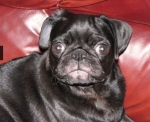Like I said before, PS isn't there to avoid apnea, it's there to make breathing easier, or to increase ventilation, or to help prevent snores and flow limitations. If EPAP isn't high enough, *then* you get apnea, and nothing happens, since you never trigger the machine, so the timing of the pressure increase would be immaterial.mbushroe wrote: ↑Wed Dec 12, 2018 3:54 amI am also confused as to why the spike comes at the end of the inhale instead of the beginning. The exhale does not need any extra pressure, it can just the soft tissue out of the way go out. But if the soft tissue even starts to block the inhale, the negative pressure against the back of the tongue pulls it even tighter blocking the flow even more. It would seem that the inhale needs the most help at the start, not the end. Although that probably would make the control and feedback loops in the machine quite a bit harder stay stable. And also why such a narrow spike. Surely the inhale could use the extra pressure throughout the inhale, unless leads to over pressuring or over filling the lungs.
Whacking in to full pressure as fast as possible (150 ms) is, to me, uncomfortable, and the higher the PS, the more uncomfortable, like being kicked in the lungs (though with a small horse).
Likewise, dropping the pressure out immediately is less comfortable, because it's like having your footing yanked out from under you, instead of being lowered gently.... EasyBreathe is all about *comfort*, while still being effective for people with normal lung conditions.
There is no negotiating in the machine, There's a set trigger value, a set cycle value, (both manually settable), and TiMin and TiMax values that govern the minimum and maximum time the machine can be at IPAP (also settable). The machine doesn't change anything, it just reacts to your breathing. Now, *YOU* may subconsciously decide to vary your breathing in some fashion, but the machine doesn't change on it's own.mbushroe wrote: ↑Wed Dec 12, 2018 3:54 amI had not thought of the trigger value being a separate parameter to change. Any zero crossing detector would have to have some amount passed the zero point to be sure that the zero point had actually been crossed, not merely reached. And yes I have once or twice started then stopped an inhale and felt the machine lock into one mode then take a moment to switch back again. And there ae times when I first put the mask on that I feel like my lungs and the machine are 'negotiating' a mutually agreeable breathing patter, and then waking up in the middle of the night and noticing how natural my breathing felt. I have not notice the negotiating for some time now. I guess my body has developed a 'setting' for breathing with a bipap and as soon as I put it on automatically switches over.
I urge you to get the clinical manual, and read through it, there's a lot of good information in there.








